
Four Ways to Easily Upgrade Your Customer Experience
Thanks to a global boom that shot eCommerce 10 years into the future, companies around the world are quickly adapting to the new normal. In an ocean of different brands from consumer goods to luxury products and more, all investing in strengthening their eCommerce operations, how does a merchant differentiate themselves from the competition?
Your online shopping experience is your business’ most valuable asset. According to PWC’s research, 73% of customers said that shopping experience is a decision-making factor for them. Another study showed that most buyers believe new technologies improve the purchasing process, on and offline.
We interviewed experts from Redstage, BigCommerce, and Threekit to discover how online merchants can upgrade their customer experience and stand out in a hyper-competitive marketplace. Watch the video interview here.

Meghan Stabler
VP of Global Product Marketing, BigCommerce
With 20 years of experience in product marketing, Meghan leads Global Product Marketing and Communications for the multinational SaaS juggernaut, BigCommerce.

Christopher Yin
Global Creative Director, Fulcrum Digital and Redstage
Since creating award-winning online experiences for Fortune 500’s like Crayola, Pfizer, and Macy’s, Christopher helps ensure Redstage’s customers get the same treatment.

Marc Uible
VP of Marketing, Threekit
Marc has spent the last decade doing marketing for PayPal and being an entrepreneur, helping companies customize products in 3D, Augmented Reality, and Virtual Photography.
1. 3D Product Models

Online product experiences are changing. In an ecosystem that prohibits shoppers from going to physical stores (not to mention physical product demos), 3D interactive product models are a must. In 2016, the average customer expected to view 3 pictures of a product before purchasing. By 2019, that number rose to 8. In 2025, it could be 20…
Marc Uible poses the question:
“Are you prepared to show your customers 10, 20, even 50 images of a single product? Or could you offer a 3D rendering of a product that can be viewed from every imaginable angle and even placed in a [physical] space?”
Marc Uible
The latter is a frictionless way of providing your customers with the confidence they need to purchase. This is where Augmented Reality comes in.
Imagine you are shopping for a stove on an online appliances marketplace. You don’t know exactly how much space you have, but you know the color and finish you want it to be. What kind of shopping experience do you need to experience to ensure that a stove matches your criteria? Check it out:
Stove Range
We designed this sample model of an AR stove range to show retailers and manufacturers how popular appliances and machinery can be viewed in a home or business setting from anywhere.
📲 Point your smartphone camera at the QR code to try it out, wherever you are!

The above 3D model provides shoppers with a way to examine every inch of the product. Unique experiences such as this one provide your customers with not only the confidence to purchase, but the confidence to continue to purchase knowing your online shopping experience is a better one than most.
“77% of customers have chosen, recommended, or paid more for a brand that provides a unique or personalized service or experience. Why? Because you’re creating something that feels unique to me. Like I’m in the store or demo, holding the product.”
Meghan Stabler
Further, providing interactive 3D renderings for customers to see can help retain customers and cultivate ongoing relationships. Utilizing 3D renderings is great for:
- Upselling: If extra parts or accessories are available, showing them in tandem with your products so customers can see how and why they should be bought together. Giving customers confidence that you are providing the best service and products keeps them with your brand for life.
- Limiting mistakes: When anyone can see what a product looks likes, how it fits in their space, and the parts needed for it there are less mis-orders or mistakes in purchasing.
- Service: Make servicing and ordering of new machine parts much easier for customers by utilizing a blown up 3D model that allows them to visualize the part(s) that need servicing.
“Customers are not only going to want these experiences but soon will come to expect that you have them. They will become the standard in eCommerce. If you want to compete with Amazon, you have to provide the same if not better shopping experiences.”
Christopher Yin
In conclusion, the main goal of your eCommerce store should be to make customers confident they are making the right decision in their purchase. With 3D models, you can do just that and more.
2. SaaS eCommerce Platforms for B2B

One of the biggest changes to the B2B buying market has been the change in the buyer demographics. Millennials, the age group of 18-34, are steadily becoming more and more of a percentage of the workforce worldwide. Specifically, becoming B2B buyers and decision-makers more often. In the age of Amazon, this age group is used to and expects great online shopping experiences now. .An eCommerce platform makes making these improvements less complex.
“As millennials come up in the workforce and start to have buyer decision making power, they’re starting to say: Hey, I’m on Amazon, TikTok, and YouTube all day, spending a majority of my day online. Can I buy this $50,000 machine that I need for my job online as well? You know, as a purchaser, can I buy it online and can I buy it seamlessly? That’s starting to be a real question in the B2B landscape, it’s pretty clear.”
Marc Uible
“68% of buyers do not want to talk to a sales rep as their first touchpoint,” says Marc Uible, sourced from this Digital Commerce 360 article. “They want to know for a fact, does this company sell what I need and can I be confident it’s what I’m looking for…” the easiest way to do that is with an eCommerce store.
SaaS, or Software as a Solution, eCommerce platforms are in-the-cloud solutions that are automatically updated and maintained by the platform themselves. BigCommerce, for example, is a SaaS eCommerce platform that is utilized by both B2B and B2C enterprises like Avery Dennison, Ben and Jerry’s, and SC Johnson for their eCommerce operations.
“In the B2B world, [millennials] experiences and expectations are still of the B2C world. So, we have to adopt the technologies of the B2C [industry] to enable our B2B buyers. B2B businesses are also beginning to expand their operations and their ability to sell direct to consumers as well. That’s where the experiences are going to delight.”
Meghan Stabler
SaaS platforms are the perfect tool for B2B companies to go direct-to-consumer. A platform like BigCommerce can help implement a wide array of feature sets.
Nationwide distributor The Binding Source launched a direct-to-consumer eCommerce operation on BigCommerce and saw the difference within a month, with conversion rate boosts of 170% and a boost to their transaction volume of 33%. Utilizing the SaaS platform’s out-of-the-box B2B features, such as custom product filters and advanced shipping options, allowed the Binding Source to launch a feature-rich store that is still easy to maintain and customize.
“Redstage’s mission is to help create digital leaders in eCommerce across industries. We help manufacturers and distributors like The Binding Source sell more and give customers a better online shopping experience.”
Christopher Yin3. Virtual Photography
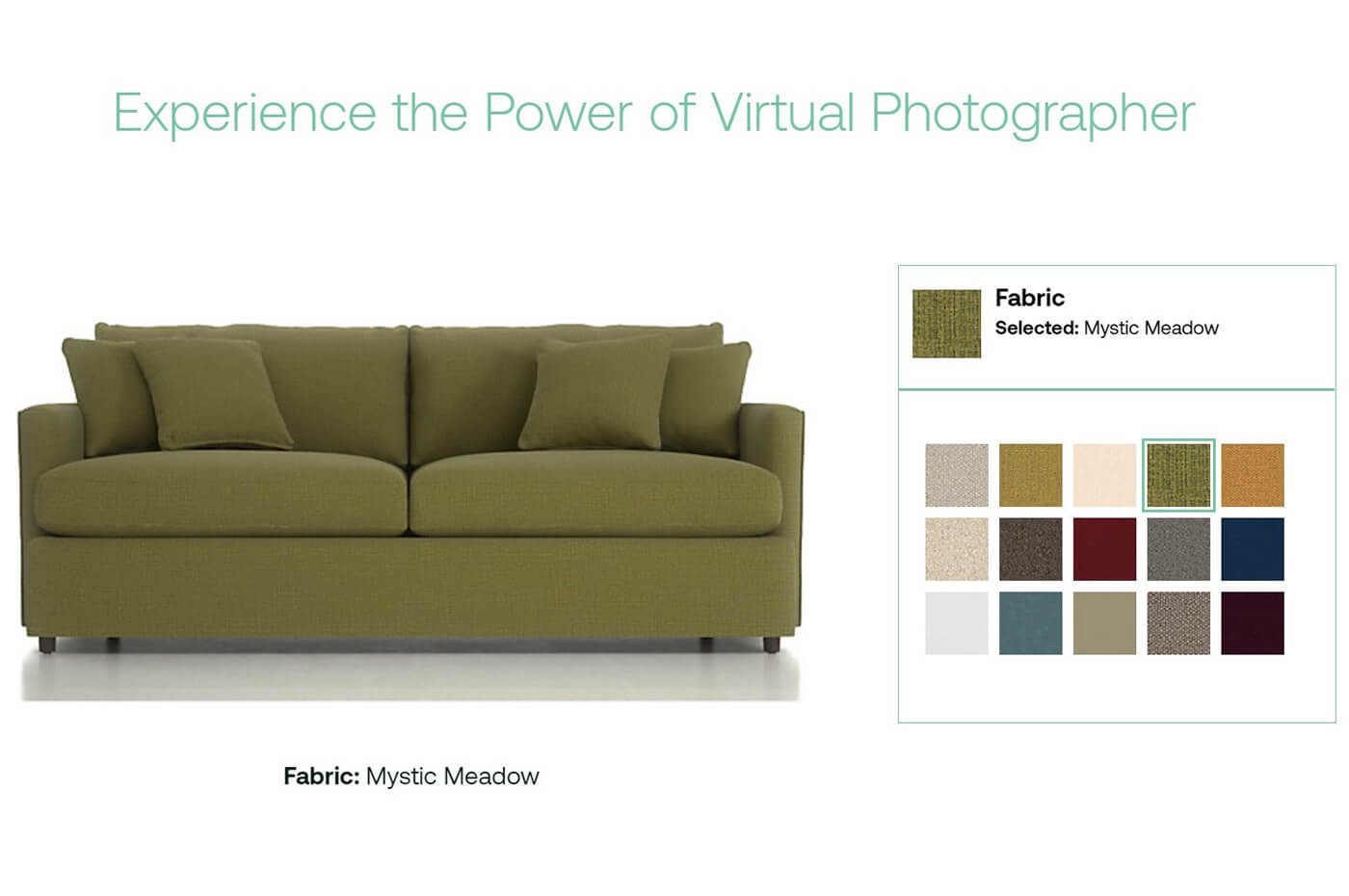
Visualizing products with multiple customization options can be tricky and expensive. Hours and hours of expensive photography and editing work can be saved by utilizing what’s being called Virtual Photography.
A Virtual Photographer can take a product rendering online and apply all the different customization options to it through CGI and 3D modeling. This saves the time and expense needed for major professional photography by allowing one product file to be customized in an endless amount of ways.
“Virtual photography is our ability to take all of those configurations, all of those 3D models, and actually render those out into photorealistic 2D imagery. We created 3 million images for Crate & Barrel in under a month without physical photography, but 3D modeling. So it’s just that amazing, sort of, high-fidelity visual that you can get at a massive scale.”
Marc Uible
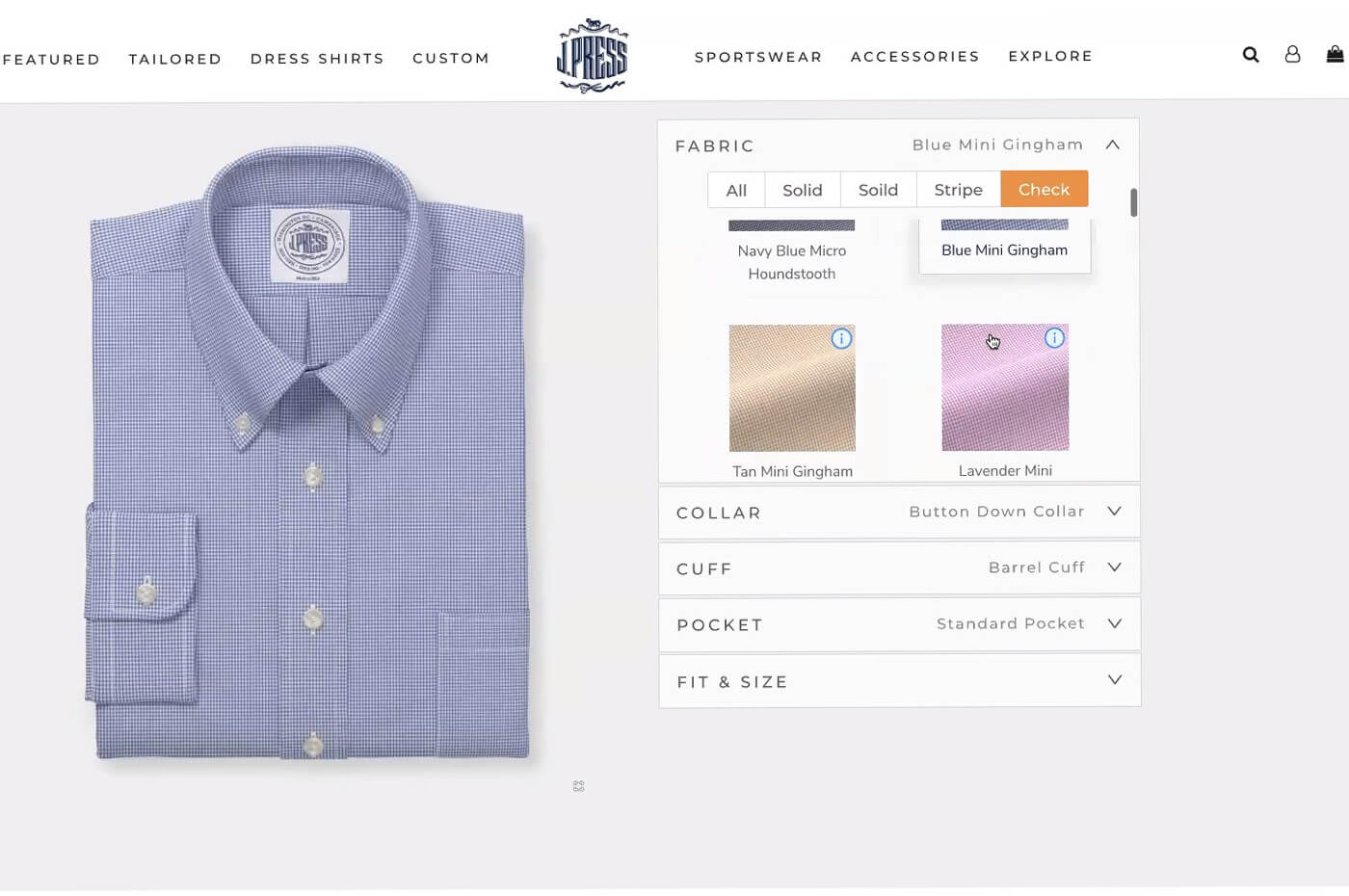
Customers have produced an 80% reduction in online returns and a 20% higher order value on average when Virtual Photography and 3D models are utilized. Why?
In apparel and furniture type applications, textures and fabrics are extremely important in helping customers understand and gain confidence in your product. These photo-realistic 3D models can represent the products more precisely than simple 2D images, thus ensuring customers understand the product they’re getting.
4. Augmented Reality for B2B and B2C
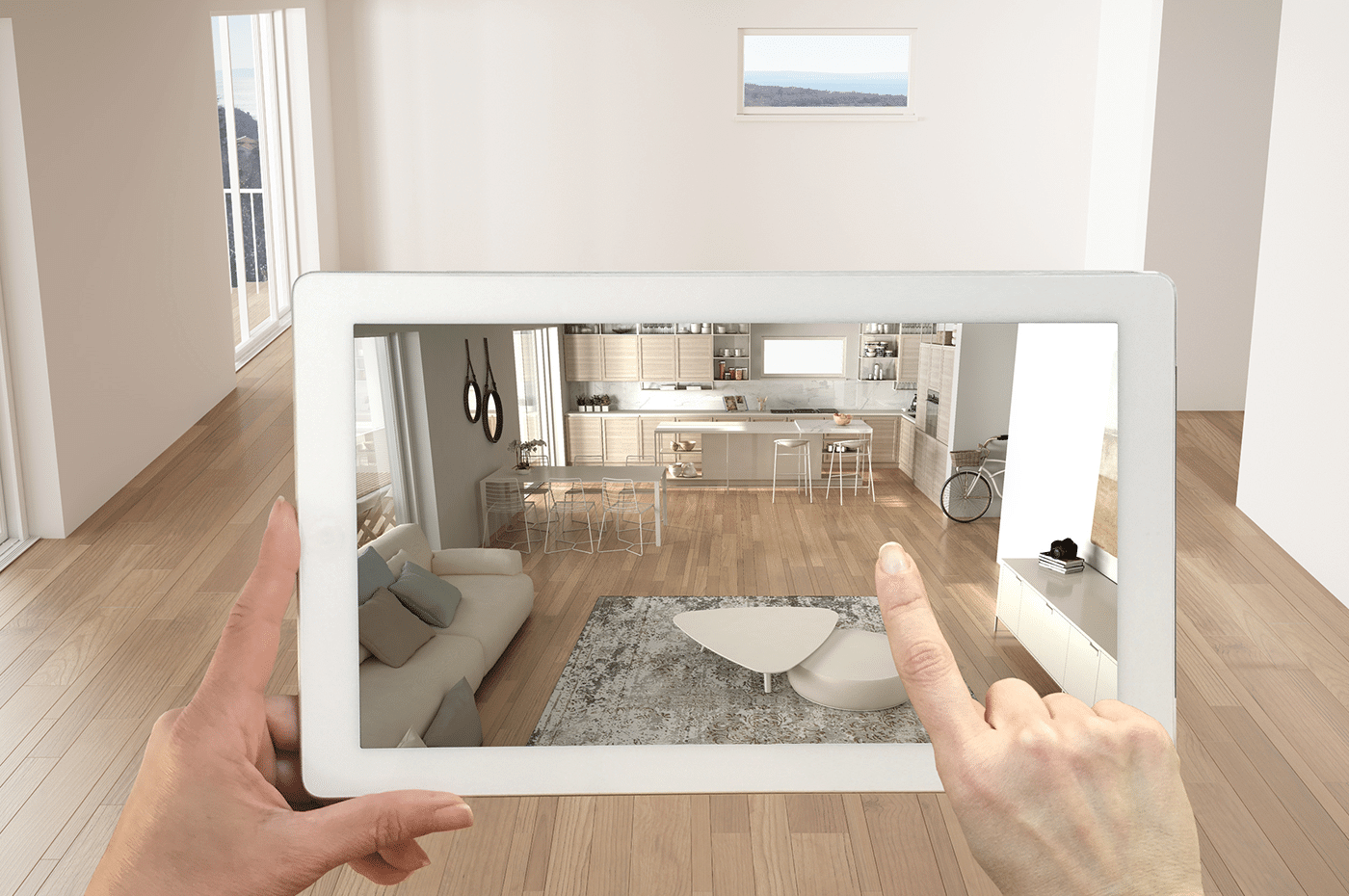
3D and photo-realistic models aren’t the only implementations into your product pages that can upgrade your shopping experience. Utilizing Augmented Reality to allow customers to place and view your products in their homes is crucial in a post-COVID eCommerce world. Shoppers in today’s ecosystem are raving about AR, especially in fashion, consumer goods, and even trading cards? The numbers speak for themselves:
- 61% of shoppers said they’d prefer to shop at stores that offer AR
- 71% of shoppers would shop at a retailer more often if they offered AR
- 40% of shoppers said they’d be willing to pay more for a product if they could experience it in AR
Taking 3D models further with Augmented Reality is a powerful way to ensure customers can see the products on them or in their space, like furniture or fashionwear, limiting returns and refunds and increasing customer retention. Retailers have reported that customers who used AR on their sites were 11x more likely to purchase than customers who did not.
“The current value of the AR market right now stands at $3.5 billion and is forecast to hit $70 to $75 billion by 2023. Especially AR, in this post-COVID world, has the unique ability to engage your customers like never before. Customers can now virtually experience the look and feel of a product that traditional photographs just can’t match, and differentiates from competitors leaning on photos.”
Christopher Yin
In the B2B space, manufacturers and distributors are implementing AR features online and wearables offline to massively increase productivity and efficiency in warehouses. Companies like DHL and and General Electric Renewables are implementing AR overlays on assembly lines and in fulfillment centers. They’re seeing huge boosts, like a 34% improvement in assembly time and a 25% increase in efficiency after implementation.
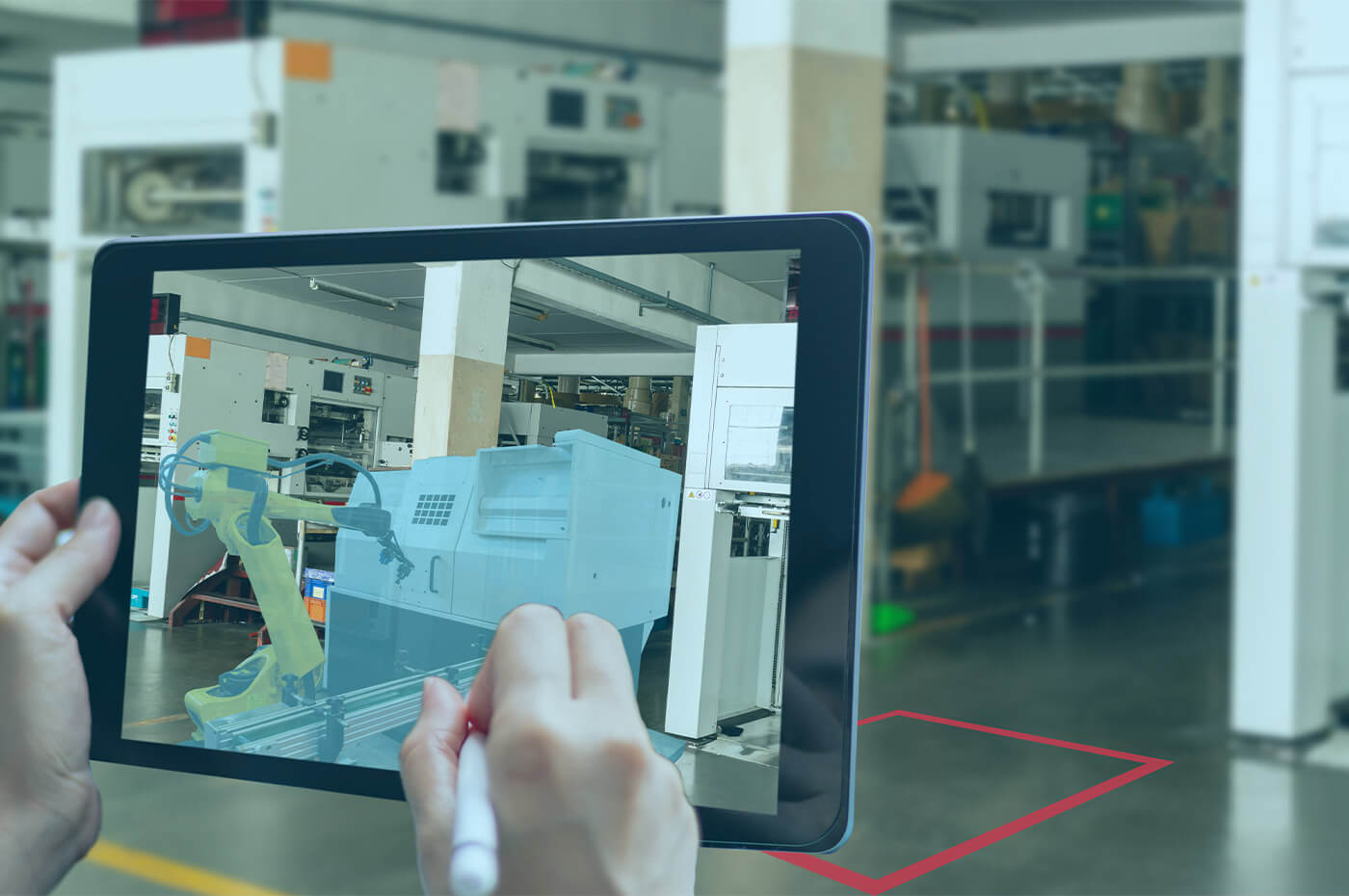
AR can also be used to share product proofs and machinery details more quickly and easily to buyers and decision-makers at client companies. If you need consistent feedback from prospects, sending them AR proofs in the form of QR codes makes getting revisions and confirmation from multiple parties faster and gives them all the confidence to close on the decision.
“What we’ve seen is even when you’re buying a super complex piece of machinery, a QR code to that exact piece of machinery can be sent to your decision-makers and throughout an organization to get threaded into that organization. People see something in AR and say ‘Wow, I can actually see this million-dollar machine in my space, and it works!’ It really drives engagement and confidence in your buyers.”
Marc Uible
What to do now…
These four commerce upgrading technologies are changing the way customers are experiencing products online. The more confidence your customers have in your products the more likely they are to buy and continue to buy. It is 5x cheaper to retain a customer than it is to gain a new one and providing the best shopping experiences is the number 1 way to retain customers. How do you provide today’s buyers with stunning shopping experiences? Allow them to experience your products in new ways!
3D models, Virtual Photography, Augmented Reality and open SaaS platforms are changing eCommerce just as COVID is, and the trends are continuously moving further and further, so don’t get left behind! If you’re stuck, contact an eCommerce consultant today and receive a free 1-on-1 demo of our 3D model and Augmented Reality capabilities.
You can view the video recording of our interview with Meghan, Marc, and Christopher here, with live demos and insights from Tony Lopez, Solutions Engineer at Threekit. Contact Redstage here to get a demo of any of the technologies mentioned above.
Subscribe to our newsletter to ensure you never miss B2B eCommerce insights, trends, and new technology from our team. Don’t forget to follow us on Twitter, Linkedin, Instagram, and Facebook too!
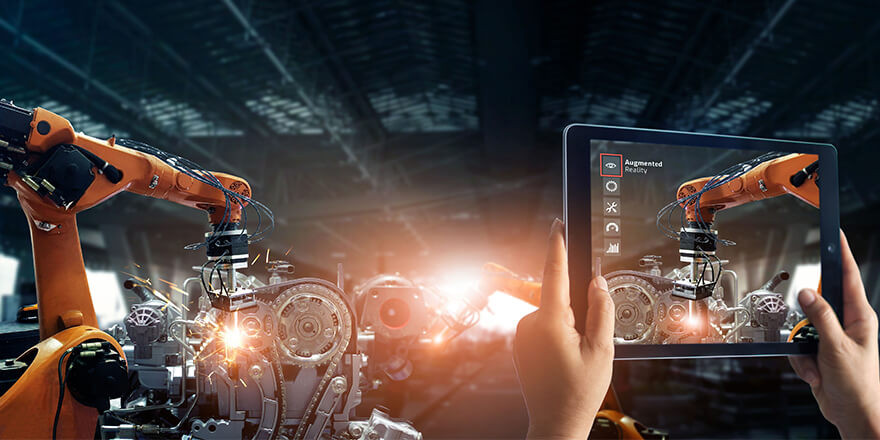

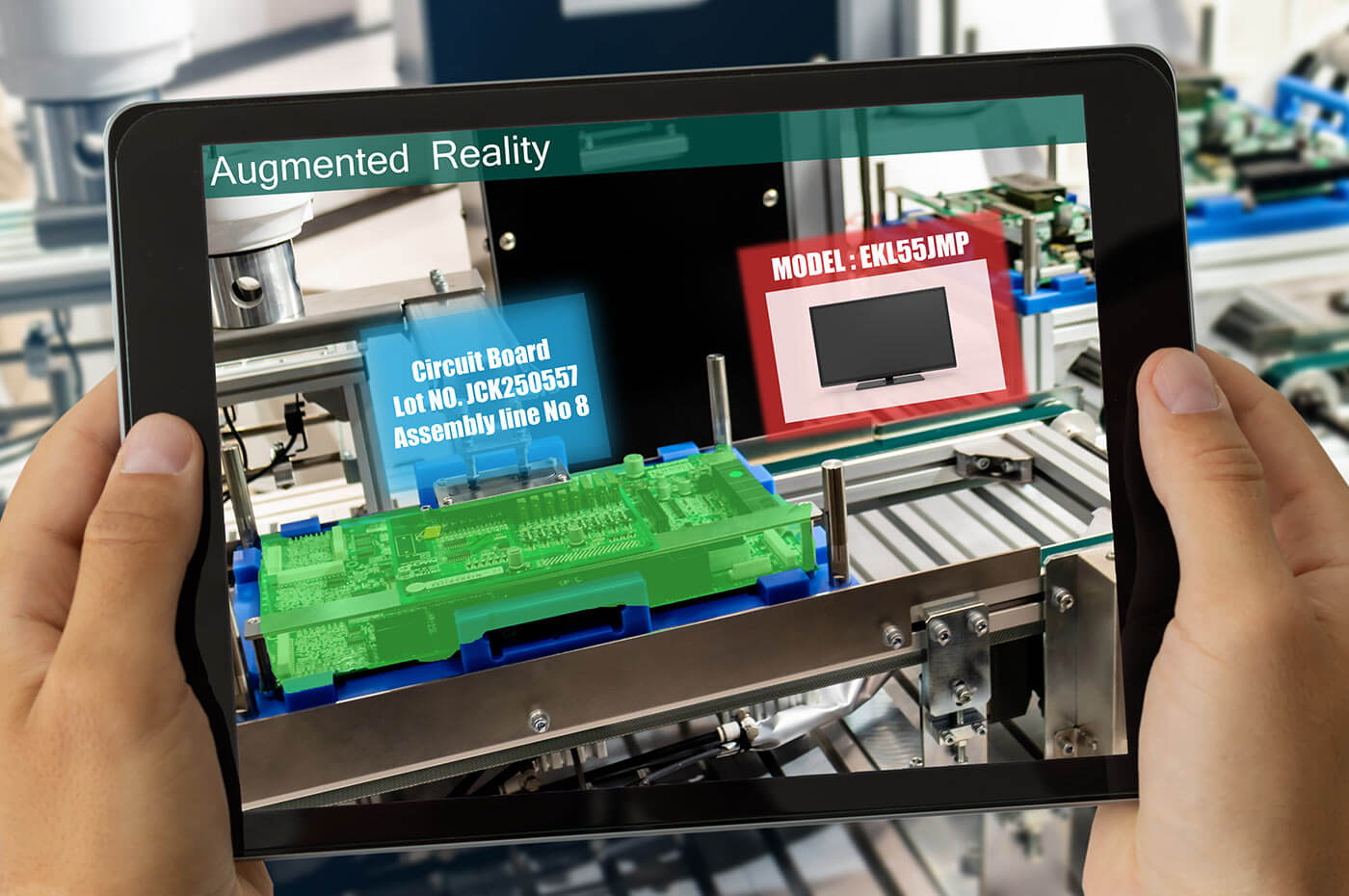
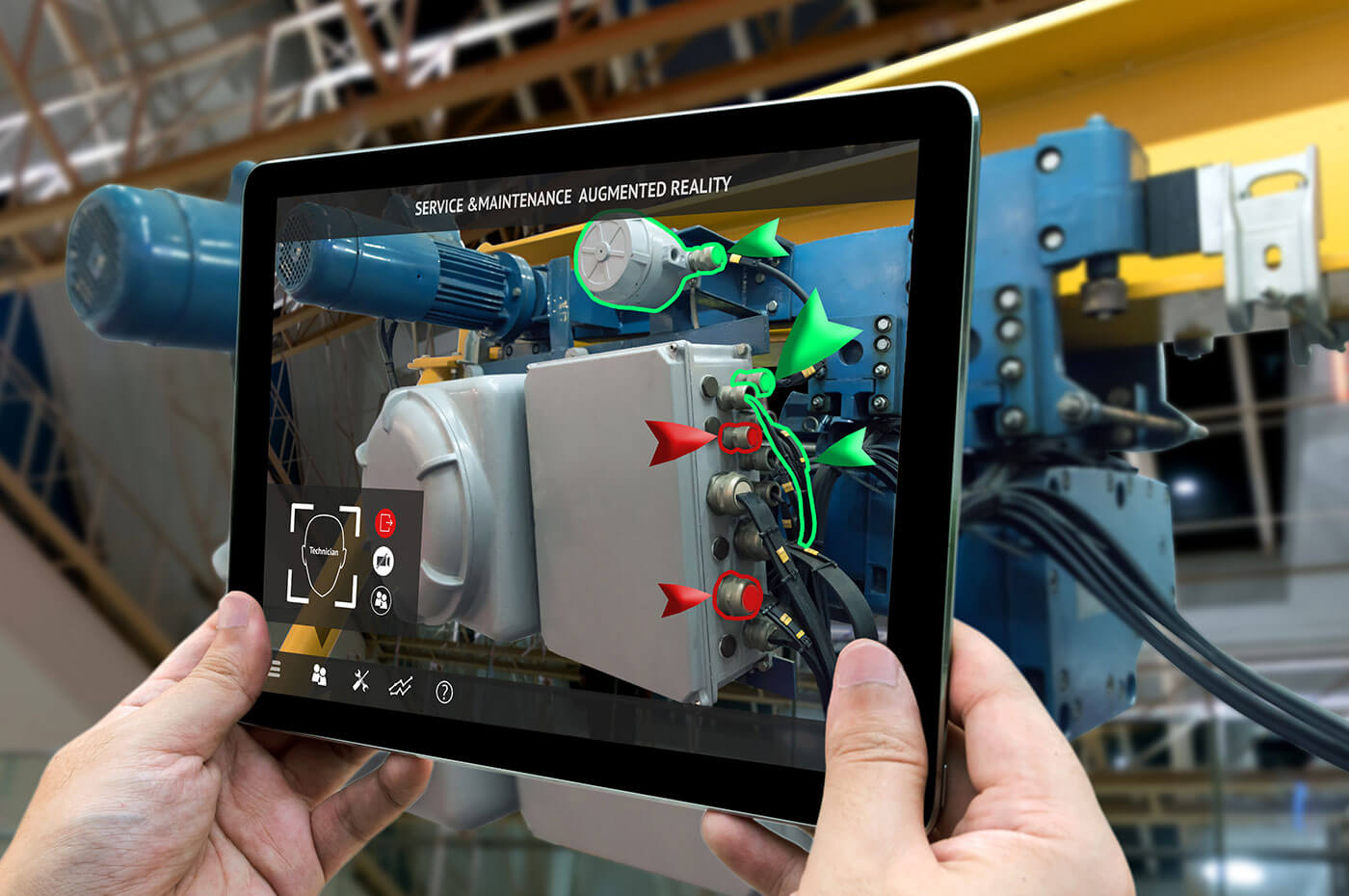
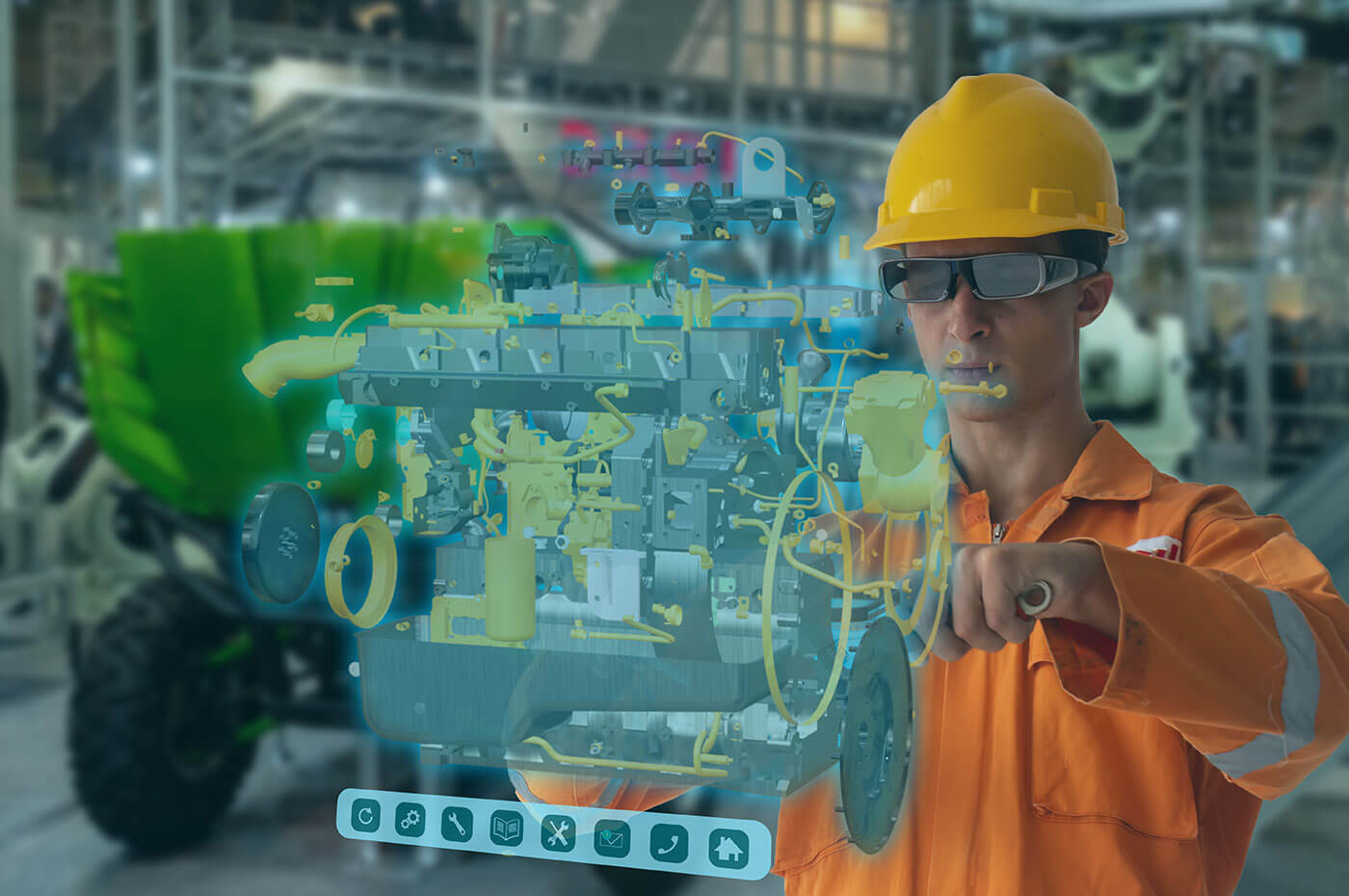
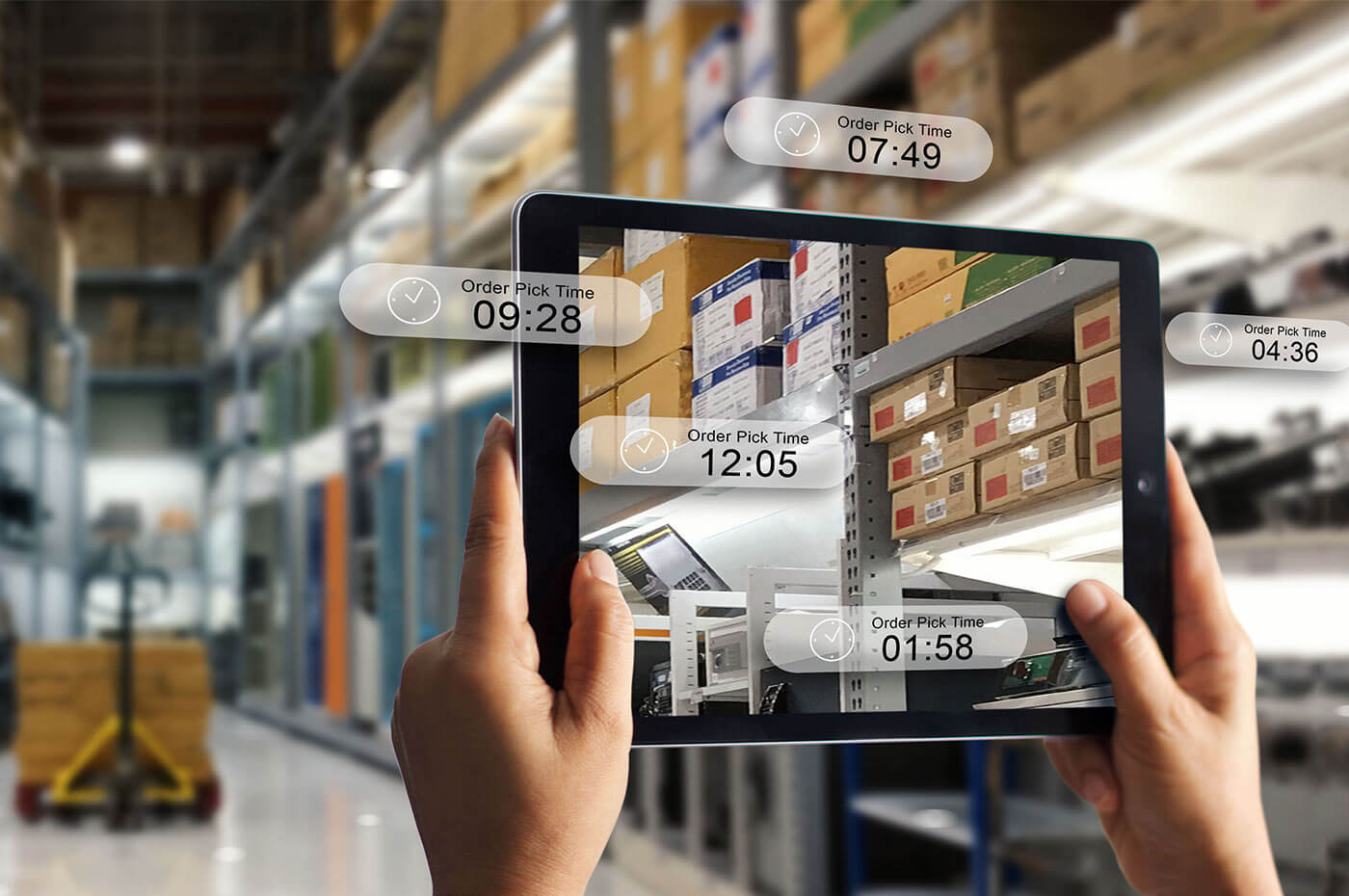

Recent Comments